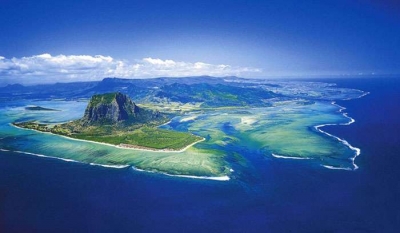
Mauritia is an ancient micro-continent that lies beneath the island of Mauritius. The lost continent dates back to when early Earth’s super-continents, Laurasia and Gondwana, were shattering into the more familiar geography that we know today. Mauritia was once part of the chunk of Gondwana that gradually split into Madagascar, India, Australia and Antarctica approximately 170 million years ago. It later broke away from Madagascar between 83.5 and 61 million years ago and was shredded as it passed over mid-ocean ridges. Lava eruptions then covered it. Volcanic eruptions on Mauritius brought fragments of the lost continent to the surface in the form of crystals called zircons (see image) that were older than the rock of the overlying crust and volcanic islands. This suggested that the rock beneath the crust was actually a part of the ancient continent.
The team chose to collect sand, rather than pulverize local rocks, to ensure that zircons inadvertently trapped in rock-crushing equipment from previous studies did not contaminate their fresh samples. The nearest known outcrop of continental crust that could have produced the Mauritian zircons is on Madagascar, far across a deep sea, Jamtveit notes. Furthermore, the zircons came from Mauritian sites so remote that it is unlikely that humans carried them there.
“There’s no obvious local source for these zircons,” says Conall Mac Niocaill, a geologist at the University of Oxford, UK, who was not involved in the research.
Also, it does not seem as if the zircons rode to Mauritius on the wind, says Robert Duncan, a marine geologist at Oregon State University in Corvallis. “There’s a remote possibility that they were windblown, but they’re probably too large to have done so,” he adds.
Picture Credit : Google




